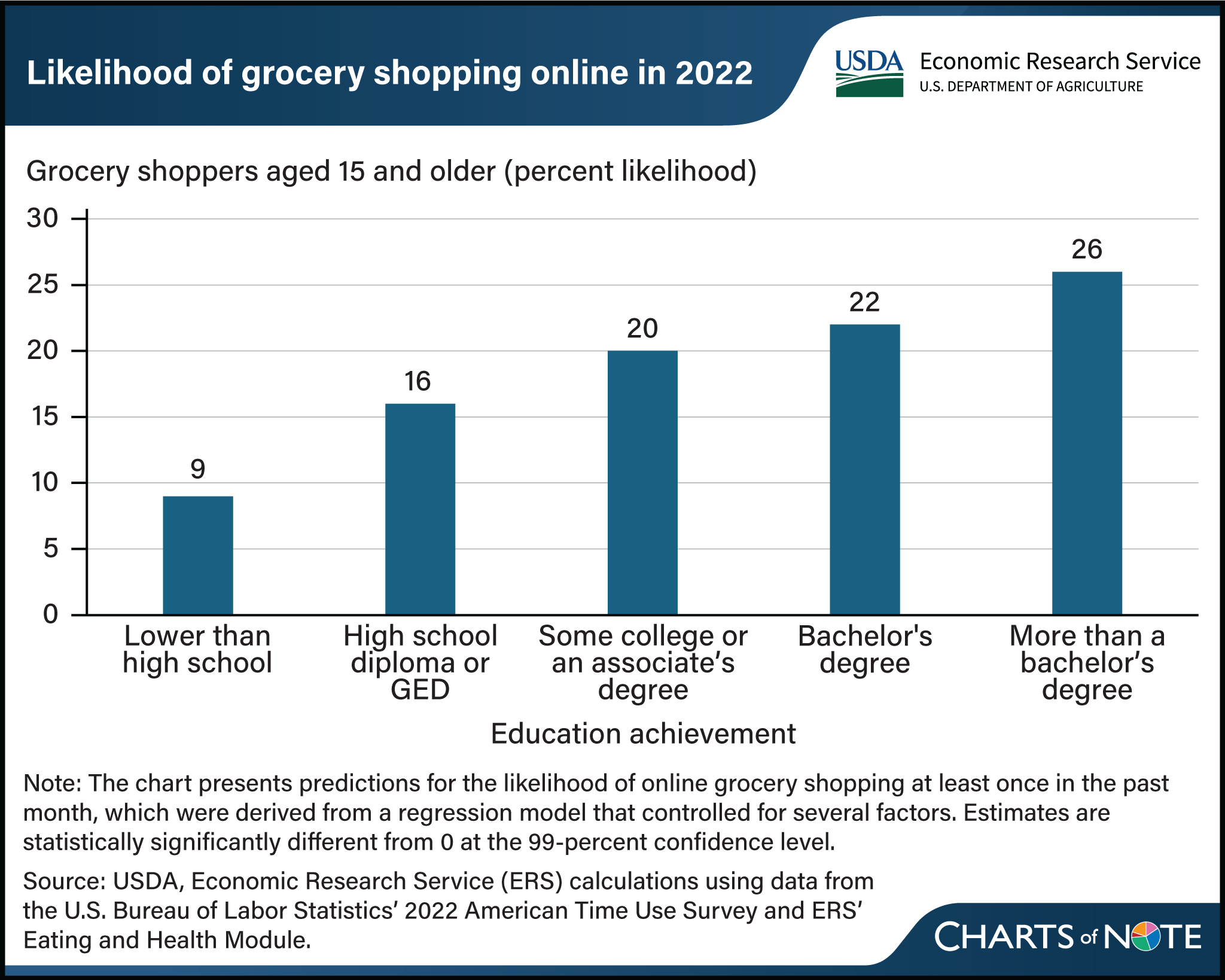U.S. online grocery shopping more likely among people with higher levels of education in 2022
- by Eliana Zeballos, Daniela Rivera-Cintron and Brandon J. Restrepo
- 9/25/2024

In 2022, the USDA, Economic Research Service (ERS) Eating and Health Module captured for the first time nationally representative data about the prevalence and frequency of U.S. residents who report shopping for groceries online. This data, collected by the U.S. Department of Labor, Bureau of Labor Statistics’ American Time Use Survey, revealed that about 1 in 5 shoppers (19.3 percent) purchased groceries online at least once in the previous 30 days from the time of the survey. Notably, ERS researchers performed a regression analysis to look at differences in the likelihood of online grocery shopping within the past month among a wide variety of characteristics, including race/ethnicity, gender, education level, households with/without children, and eligibility for the Supplemental Nutrition Assistance Program (SNAP). The largest disparity among any of these characteristics was the difference in an individual’s education level—from 9 percent for those with less than a high school diploma/GED to 26 percent for those with more than a bachelor’s degree. In other words, compared with people with less than a high school diploma or GED, those with more than a bachelor’s degree were 17 percentage points more likely to buy groceries online. These data are calculated from the regression analysis in the ERS report Who Shops For Groceries Online?, published in September 2024.


